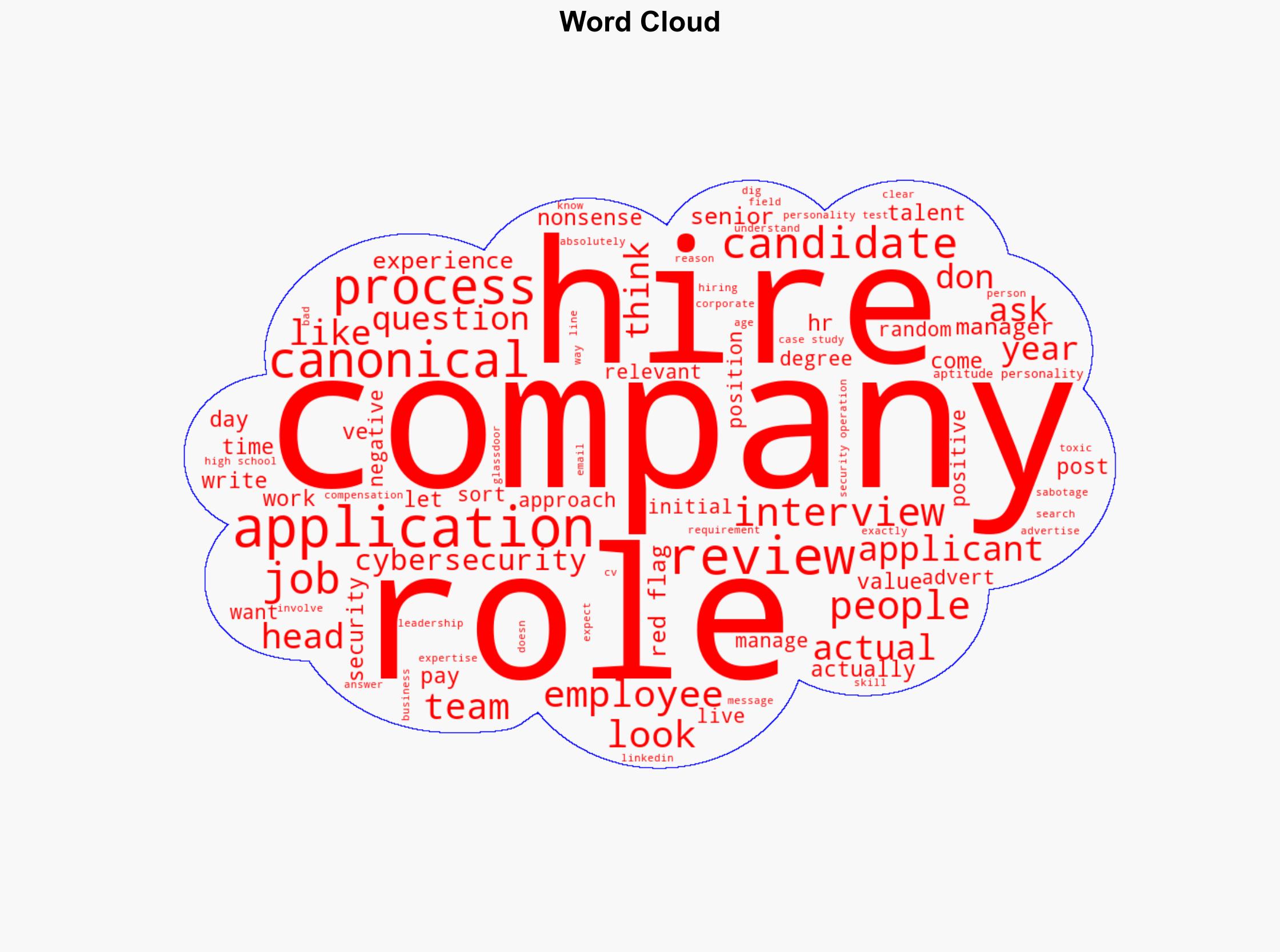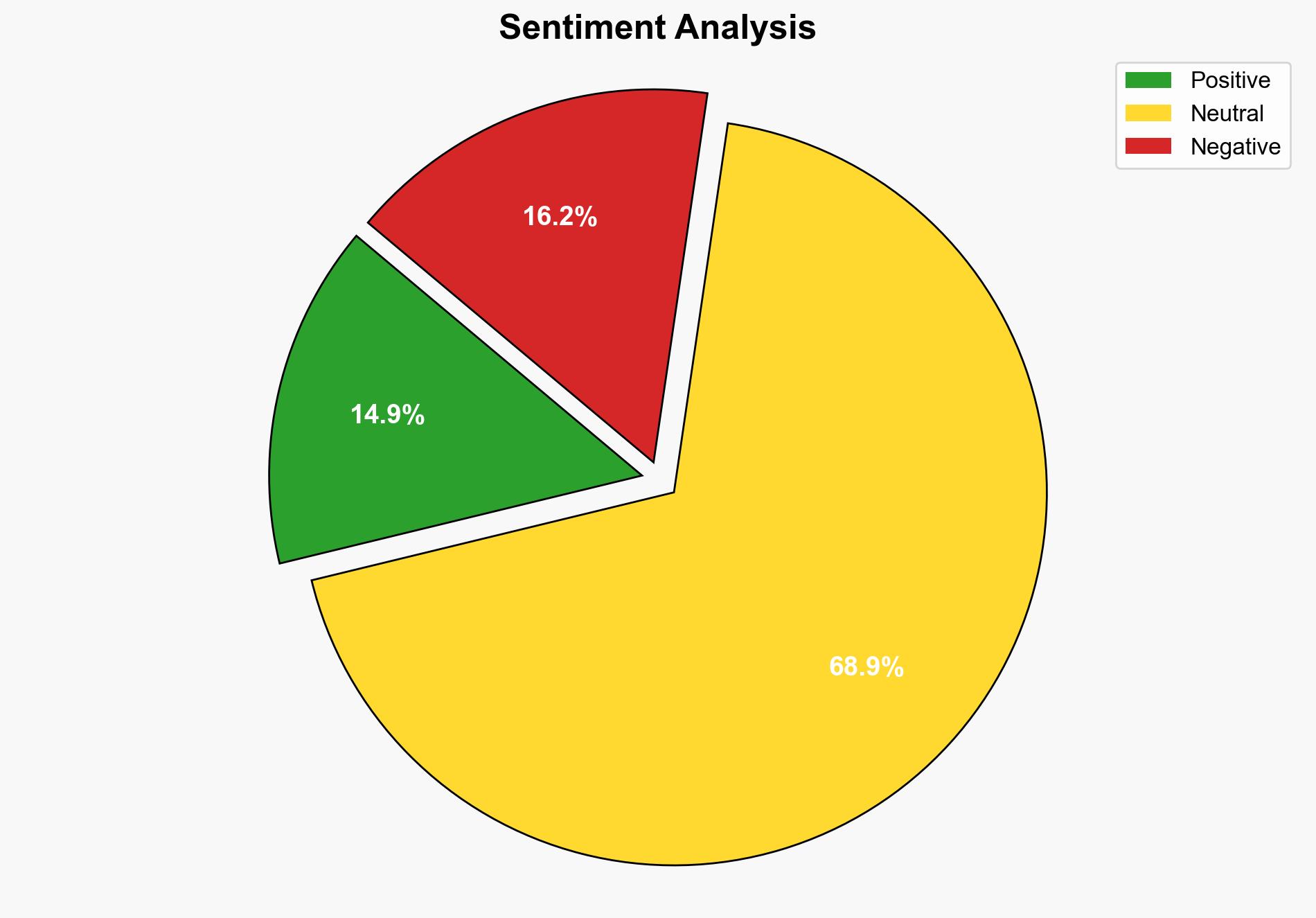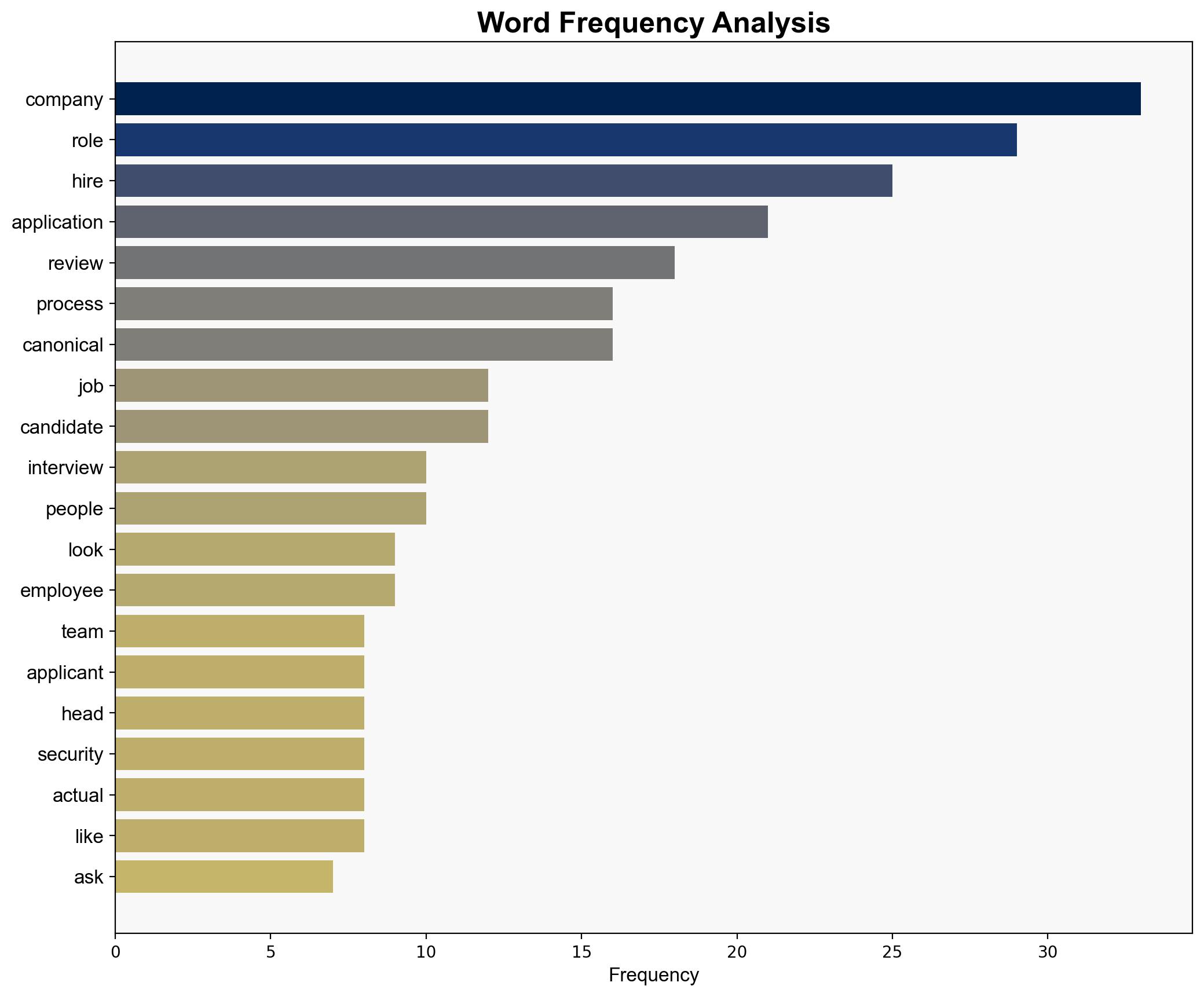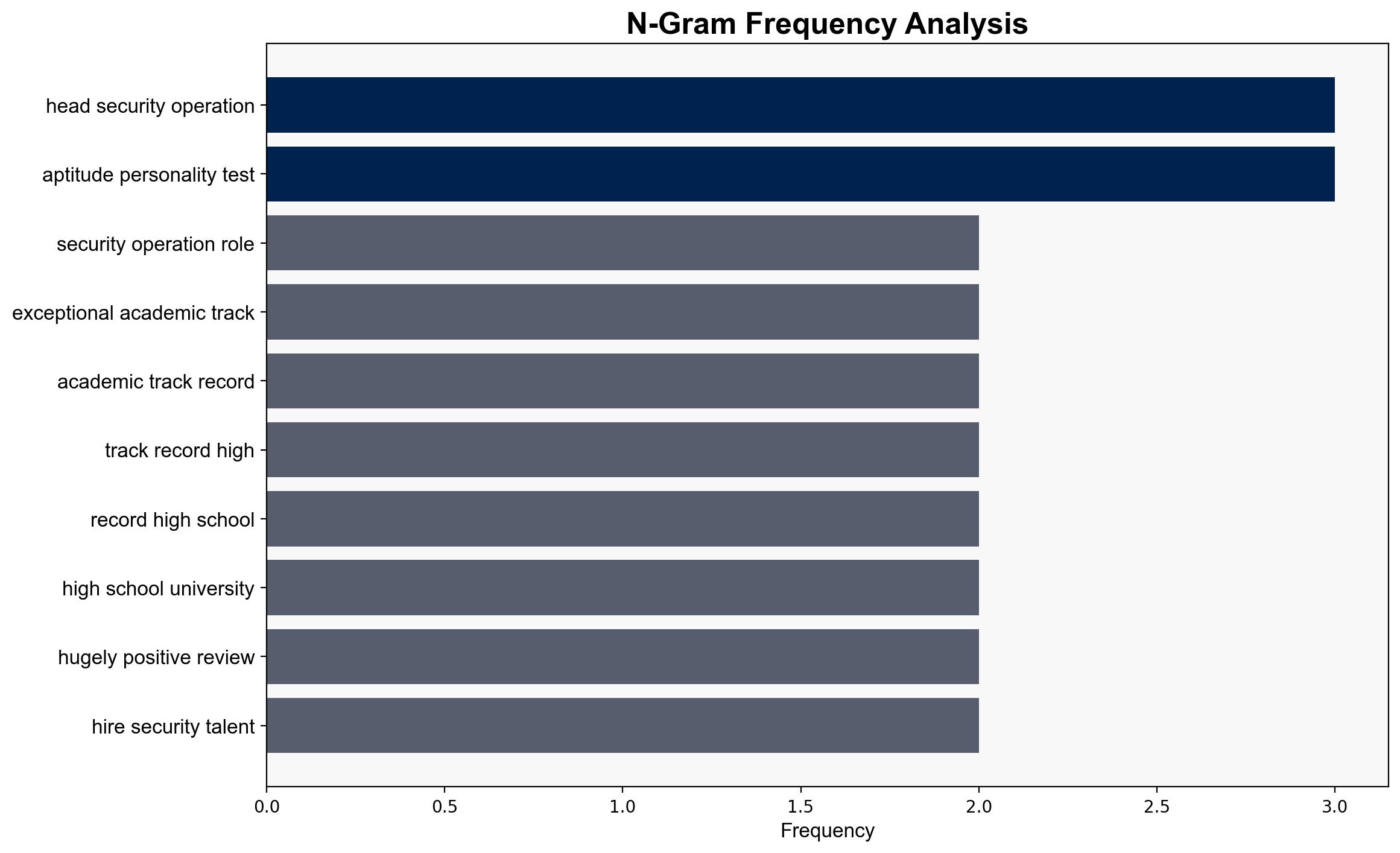A case study in bad hiring practice and how to fix it – Tomkranz.com
Published on: 2025-08-13
Intelligence Report: A case study in bad hiring practice and how to fix it – Tomkranz.com
1. BLUF (Bottom Line Up Front)
The analysis suggests that the primary issue with the hiring practices at Canonical is a misalignment between job advertisement strategies and actual recruitment needs. The most supported hypothesis is that Canonical’s hiring practices are inefficient and potentially damaging to its reputation, leading to a failure in attracting qualified cybersecurity talent. Confidence level: Moderate. Recommended action: Revise recruitment strategies to align job postings with realistic expectations and improve candidate engagement.
2. Competing Hypotheses
1. **Hypothesis A**: Canonical’s hiring practices are deliberately designed to filter out candidates who do not meet exceptionally high standards, thus ensuring only top-tier talent is considered.
2. **Hypothesis B**: Canonical’s hiring practices are poorly executed, resulting in ineffective recruitment processes that fail to attract suitable candidates due to unrealistic job advertisements and compensation packages.
Using Bayesian Scenario Modeling, Hypothesis B is better supported due to the evidence of spam-like job postings, unrealistic compensation expectations, and irrelevant academic requirements, which suggest inefficiency rather than strategic selectivity.
3. Key Assumptions and Red Flags
– **Assumptions**:
– Hypothesis A assumes that Canonical has a strategic intent behind its hiring practices.
– Hypothesis B assumes a lack of strategic oversight in recruitment processes.
– **Red Flags**:
– The use of spam-like job postings and unrealistic requirements.
– The disconnect between job advertisement and actual role needs.
– **Blind Spots**:
– Lack of insight into internal decision-making processes at Canonical.
– Potential external factors influencing recruitment strategies, such as market conditions or competitive pressures.
4. Implications and Strategic Risks
The current hiring practices could lead to several risks, including:
– **Reputational Damage**: Continued poor hiring practices may harm Canonical’s reputation in the cybersecurity community.
– **Talent Shortage**: Failure to attract and retain qualified candidates could exacerbate talent shortages, impacting operational effectiveness.
– **Economic Impact**: Inefficient recruitment processes could lead to increased costs and reduced productivity.
– **Cybersecurity Risks**: Inadequate staffing in cybersecurity roles could expose Canonical to heightened security threats.
5. Recommendations and Outlook
- Revise job advertisements to reflect realistic expectations and competitive compensation packages.
- Implement targeted recruitment strategies to engage with potential candidates effectively.
- Conduct an internal review of recruitment processes to identify and address inefficiencies.
- Scenario-based projections:
- Best Case: Improved hiring practices lead to successful recruitment of top-tier talent.
- Worst Case: Continued inefficiencies result in critical talent shortages and reputational damage.
- Most Likely: Incremental improvements in hiring practices lead to gradual enhancement in recruitment outcomes.
6. Key Individuals and Entities
Canonical (entity mentioned in the analysis).
7. Thematic Tags
cybersecurity, recruitment strategies, talent acquisition, corporate reputation





